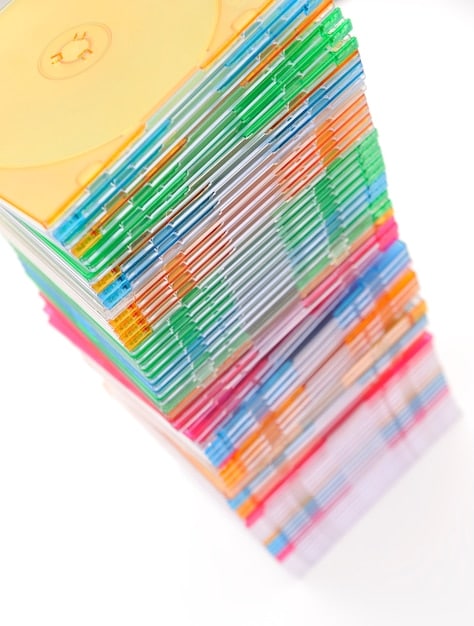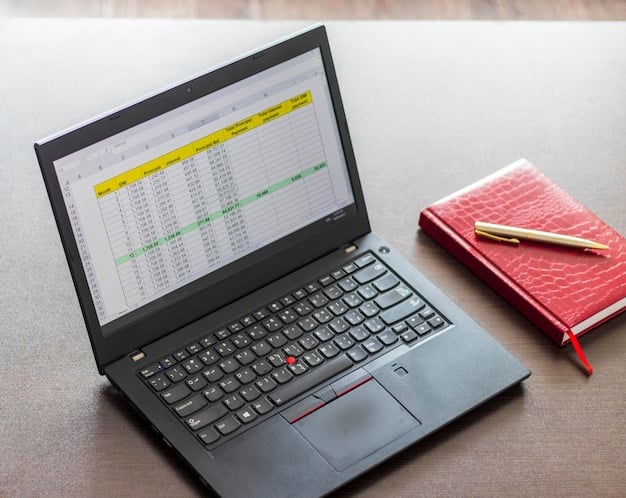The Power of Envelope Budgeting: A Hands-On Guide to Saving Money

The power of envelope budgeting offers a tangible, effective method for managing finances by physically allocating cash into categories, fostering acute spending awareness and disciplined savings habits.
In a world increasingly driven by digital transactions, the tangible act of managing physical cash might seem antiquated to some. Yet, the method known as the power of envelope budgeting: a hands-on approach to saving money continues to resonate as a highly effective financial strategy. This classic system, rooted in simplicity and direct accountability, empowers individuals to gain unparalleled control over their spending and accelerate their savings goals.
Understanding the Core Principles of Envelope Budgeting
At its heart, envelope budgeting is remarkably straightforward. It involves categorizing your expenses and then physically allocating specific amounts of cash for each category into separate envelopes. Once the money in an envelope is gone, you stop spending in that category until the next pay period. This forces a tangible, immediate awareness of your financial limits, fundamentally shifting how you perceive and interact with your money.
This method transcends mere theoretical budgeting advice by introducing a physical constraint. Unlike digital tracking apps that might allow overdrafts or easy transfers, a physical envelope emptied of its funds provides an undeniable signal: the budget for that specific area has been reached. This immediate feedback loop is powerful, curbing impulsive purchases and encouraging mindful spending decisions. It’s not just about knowing where your money goes; it’s about dictating where it can go.
The Historical Context and Modern Relevance
The concept of envelope budgeting isn’t new; it has roots in traditional cash-based societies where physical money was the primary medium of exchange. Families would literally divide their income into jars or envelopes for rent, food, and other needs. This historical context highlights its timeless practicality. In today’s digital age, where spending with cards can feel abstract, the envelope system brings back that critical tangibility.
- It combats the “phantom money” effect of credit and debit cards.
- It provides a clear visual representation of remaining funds for each category.
- It fosters a stronger emotional connection to money and its purpose.
Many people find that the physical act of handling cash and seeing it diminish provides a level of psychological impact that a bank statement or app simply cannot replicate. This concrete interaction transforms abstract figures into a tangible reality, making financial discipline less of a chore and more of an intuitive process.
Ultimately, understanding these core principles is the first step toward leveraging the envelope method effectively. It’s about building a direct, undeniable relationship with your money, ensuring that every dollar has a job and is accounted for, rather than simply disappearing into the digital ether.
Setting Up Your Envelope Budget: A Step-by-Step Guide
Implementing an envelope budget successfully requires a clear, methodical approach. It begins with a comprehensive understanding of your income and expenses, followed by the practical steps of setting up your envelopes and committing to the system. This hands-on process is designed to bring immediate clarity to your financial habits and enforce spending limits in a very real way.
The initial setup phase is crucial, as it lays the foundation for all your future financial decisions within this framework. Take your time to accurately assess your financial landscape, identify all income sources, and meticulously list out every conceivable expense. This thoroughness will prevent future surprises and ensure your budget accurately reflects your lifestyle.
Step 1: Determine Your Monthly Income
Before you can allocate funds, you need to know exactly how much money you have coming in. This should be your net income – the amount you actually receive after taxes, deductions, and contributions to retirement accounts or health insurance. If your income varies from month to month, consider using the lowest typical amount or an average over several months to create a conservative budget that avoids overestimating your available funds.
- Gather all pay stubs, freelance invoices, or other income statements.
- Calculate your total reliable net income for the month.
- Adjust for any irregular income sources, considering them as bonuses rather than baseline.
Having a precise figure for your monthly income is non-negotiable. It dictates the entirety of your budget, ensuring that you only allocate funds that genuinely exist. Underestimating can lead to missed savings opportunities, but overestimating can quickly derail your efforts, leading to financial stress and debt.
Step 2: Track and Categorize Your Expenses
This is arguably the most intensive, yet most critical, part of setting up your envelope budget. For at least a month, diligently track every single dollar you spend. Use a spreadsheet, a notebook, or a budgeting app to log every coffee, every grocery run, every bill payment. This data will reveal where your money is actually going, which might differ significantly from your assumptions. Once tracked, group these expenses into logical categories.
- Fixed expenses: rent/mortgage, loan payments, insurance premiums.
- Variable expenses: groceries, dining out, entertainment, gas, clothing.
- Savings goals: emergency fund, vacation, down payment.

The goal here is not to judge your spending, but to understand it. Once you have a clear picture of your spending habits, you can create realistic budget categories. Don’t create too many categories, as this can make the system cumbersome. Start with broad categories and refine them as you become more comfortable with the system.
Step 3: Allocate Funds to Envelopes
With your income and expenses determined, it’s time for the “envelope” part of the envelope budget. On payday, withdraw the cash you’ve budgeted for your variable expenses and cash-based savings goals. Then, physically distribute that cash into separate envelopes, each labeled with its corresponding category. For fixed expenses paid electronically (like rent or utilities), ensure those funds remain in your bank account, but mentally or digitally “allocate” them so you know they are reserved.
This physical act is transformative. When you hold the cash for “Dining Out” or “Entertainment,” it becomes tangible. You see exactly how much you have for that specific purpose. This visual and tactile feedback loop is what makes envelope budgeting so effective in curbing overspending and fostering disciplined financial behavior. It’s a direct consequence of your budget, right in your hands.
Step 4: Live by Your Envelopes, Track, and Adjust
Now, the real work begins: living within the confines of your envelopes. When you need to buy groceries, take the money from the “Groceries” envelope. When that envelope is empty, you stop spending on groceries until the next payday. This is the core discipline of the system. Continuously track your spending against your envelopes. At the end of each month, review your progress. Did you run out of money in one envelope too soon? Did you have money left over in another?
- Be disciplined: Only spend from the designated envelope.
- Regularly review: Check envelope balances before spending.
- Be flexible: Adjust category amounts based on real-world spending where necessary.
The envelope budgeting system is not static; it’s a dynamic tool that adapts to your life. The initial setup provides a strong starting point, but a willingness to track, reflect, and make informed adjustments based on your real spending patterns is key to long-term success and financial mastery.
Beyond the Basics: Advanced Strategies and Digital Adaptations
While the fundamental principles of envelope budgeting emphasize physical cash and tangible envelopes, the method is far from rigid. Its core strength—the clear allocation of funds and immediate spending feedback—can be adapted to suit modern financial habits, including digital transactions and more intricate savings goals. Transitioning beyond the basic physical setup allows for greater flexibility without sacrificing discipline. This means exploring how the psychological benefits of the envelope system can be replicated or even enhanced through digital tools and refined budgeting techniques.
The goal here is not to abandon the core philosophy, but to evolve it. For many, carrying large amounts of cash isn’t practical or safe. Therefore, leveraging technology becomes a logical next step, allowing the principles of financial allocation and accountability to thrive in a cashless world. This calls for a nuanced understanding of how digital platforms can reinforce, rather than undermine, the very discipline that envelope budgeting instills.
Digital Envelope Budgeting: Adapting to a Cashless World
The most common critique of traditional envelope budgeting is its reliance on cash, which can be inconvenient or even unsafe in a predominantly digital economy. Fortunately, several apps and online tools have emerged that simulate the envelope system digitally. These platforms allow you to create virtual “envelopes” or categories within your bank account, earmarking funds for specific purposes. When you spend, you mentally (or within the app) deduct from the relevant digital envelope.
- Popular apps like YNAB (You Need A Budget) or Goodbudget directly implement virtual envelope principles.
- Some bank accounts offer sub-accounts or “pots” that can serve as digital envelopes.
- It requires stronger self-discipline, as there’s no physical barrier to overspending from an emptied virtual envelope.
The key to success with digital envelope budgeting lies in your commitment to manually track and assign every transaction to its correct virtual envelope. This digital adaptation retains the clarity of fund allocation while providing the convenience of card payments. It’s a powerful hybrid for those who prefer not to deal with physical cash but still crave the structured approach of an envelope system.
Handling Irregular Income and Unexpected Expenses
Life is rarely predictable, and incomes can fluctuate. Envelope budgeting is robust enough to handle these inconsistencies. For irregular income (freelance work, commissions), consider designating a “buffer” envelope or a separate savings account for these funds. Distribute them strategically in subsequent budget periods after fixed expenses are covered, focusing first on essential categories or high-priority savings goals. For unexpected expenses, an “Emergency Fund” envelope is paramount. This should be a continuously funded category, separate from your regular spending envelopes.
The strategy for irregular income often involves saving a significant portion of the variable income until fixed expenses are fully covered for future months, creating a buffer that smooths out financial peaks and valleys. This foresight prevents financial strain during lean periods. Unexpected expenses, on the other hand, are best mitigated by a dedicated emergency fund, ensuring that a leaky roof or a medical bill doesn’t derail your entire budget. This proactive approach underscores the forward-thinking nature of robust financial planning.
Integrating Savings Goals within the Envelope System
Envelope budgeting isn’t just about managing daily expenses; it’s an excellent tool for achieving specific savings goals. Create dedicated envelopes for goals like a down payment on a house, a vacation, a new car, or even a large purchase. Each payday, allocate a specific amount to these savings envelopes. Seeing these envelopes grow over time provides strong motivation and a clear visual representation of your progress towards larger financial milestones. This systematic approach transforms abstract savings targets into tangible, achievable objectives.
For long-term goals, opening a separate savings account that you can mentally link to an “envelope” might be more practical than stuffing thousands of dollars into a physical envelope. The principle remains the same: define the goal, allocate the funds, track the progress, and resist the temptation to divert those funds for other purposes. This dedicated approach ensures that while you manage your daily spending, your future aspirations are also being actively nourished and pursued.
By moving beyond the basic cash-only system and embracing digital tools, handling life’s financial curveballs, and meticulously funding your future goals, the envelope budgeting method transforms from a simple spending tracker into a comprehensive, adaptive financial management powerhouse. It provides the structure needed to navigate complex financial landscapes while retaining the empowering sense of control that defines its core.
Common Challenges and How to Overcome Them
While the power of envelope budgeting: a hands-on approach to saving money is undeniably effective, implementing any new financial system comes with its own set of hurdles. The transition from abstract digital spending to concrete cash management can present a steep learning curve, necessitating patience, adaptability, and a strong commitment to the process. Recognizing these common challenges upfront allows for proactive strategies to mitigate them, ensuring the system remains a tool for empowerment rather than frustration.
Many individuals find the initial weeks or months the most difficult, as they adjust to the discipline and transparency the system demands. Impulse purchases, unexpected needs, or simply forgetting to grab cash for a specific envelope can all test one’s resolve. However, these are not insurmountable obstacles; rather, they are opportunities to refine the system and build stronger financial muscles.
Overcoming the Urge for Impulse Purchases
One of the primary benefits of envelope budgeting is its ability to curb impulse spending, but the urge doesn’t disappear overnight. When an envelope is empty, and you encounter an irresistible item, the temptation to “borrow” from another envelope or use a card can be strong. The key here is adherence to the rules you’ve set for yourself. If an envelope is empty, the money for that category is truly gone. This forces a pause, making you reconsider whether the purchase is truly necessary or if it can wait until the next budget cycle.
- Carry only the cash from the relevant envelope when shopping for that category.
- Implement a “24-hour rule” for non-essential purchases: if you still want it tomorrow, reconsider.
- Understand that saying “no” to a current impulse means saying “yes” to future financial goals.
The psychological impact of seeing an empty envelope is a powerful deterrent. It transforms a fleeting desire into a tangible question: “Do I truly have the funds allocated for this right now?” This pause, cultivated by the physical limitation of an empty envelope, is invaluable in developing more mindful spending habits over time. It’s about retraining your brain to connect spending with actual, finite resources.
Managing Digital Transactions within a Cash System
As discussed, modern life often necessitates digital payments. This can complicate a purely cash-based envelope system. The solution lies in discipline and a hybrid approach. For expenses paid digitally (online shopping, subscription services, bills), ensure you allocate the funds in your bank account, just as you would with physical envelopes. You might use a spreadsheet or a digital budgeting app to mentally track these virtual “envelopes.” When you make a digital purchase, immediately deduct it from the corresponding virtual category.

This demands a higher level of self-awareness and consistent tracking. One strategy is to use a dedicated debit card for envelope-budgeted digital purchases, and regularly check your balances against your digital envelope allocations. The goal is to replicate the “empty envelope” effect digitally, even if the money isn’t physically taken out. This means acknowledging when a virtual category is “empty” and stopping spending in that area.
Dealing with Unexpected Events and Variable Expenses
Life throws curveballs. Car repairs, medical emergencies, or sudden travel needs can derail even the most meticulously planned budget. This is where the “emergency fund” envelope (or account) becomes critical. It acts as a financial shock absorber. For variable expenses that fluctuate (like utilities based on season), try to budget for the higher end of the spectrum to avoid shortages. If you consistently have money left over in a variable category, you can reallocate it to savings or another envelope that frequently runs dry.
- Prioritize building an emergency fund to cover 3-6 months of living expenses.
- For highly variable categories, budget slightly more than the typical spend.
- Review and adjust your budget categories monthly to reflect real-world usage and unexpected events.
The adaptability of the envelope system is one of its greatest strengths. It’s not about perfect adherence, but about consistent effort and willingness to learn from your spending patterns. Each time you face a challenge and adapt, you strengthen your financial resilience and deepen your understanding of your own money habits. This iterative process of budgeting, learning, and adjusting is what truly fuels long-term financial success.
Success Stories and Testimonials: Real-World Impact
The true measure of any financial system lies in its real-world impact. The power of envelope budgeting: a hands-on approach to saving money isn’t just a theoretical concept; it has transformed countless lives, empowering individuals and families to conquer debt, build substantial savings, and achieve long-held financial dreams. These stories are a testament to the system’s simplicity, effectiveness, and the profound psychological shift it can instigate.
From young professionals struggling with student loan debt to families aiming for financial independence, the recurring theme in these success narratives is the newfound clarity and control over money. They highlight that while the method is straightforward, its implications for financial well-being are far-reaching, enabling a proactive rather than reactive approach to personal finance.
From Debt to Financial Freedom: Sarah’s Journey
Sarah, a 32-year-old marketing professional, found herself overwhelmed by credit card debt and student loans. Despite a decent salary, she felt her money was constantly slipping through her fingers. “I used to just swipe my card without thinking,” she recounts. “It felt like Monopoly money.” After discovering envelope budgeting, she started by allocating cash for groceries, dining out, and entertainment. “The first month was tough,” she admits. “I ran out of ‘Dining Out’ money within two weeks. But seeing that empty envelope was a wake-up call.”
Within six months, Sarah had paid off one credit card. Her strategy involved creating an “Extra Debt Payment” envelope and enthusiastically stuffing any leftover cash from other categories into it. “It became a game,” she says. “How much could I save to throw at my debt?” After two years, she was debt-free, a feat she credits entirely to the tangible constraints and clear visual progress afforded by her envelopes. Her story underscores the power of tangible limits in driving behavioral change.
Saving for a Down Payment: The Chen Family’s Experience
The Chen family, consisting of John and Emily and their two young children, dreamed of owning their first home. Their biggest hurdle was saving for a down payment in an expensive housing market. Traditional budgeting felt too abstract. They decided to implement an envelope system for all their variable expenses, from childcare to home maintenance.
- They created a large “Down Payment” envelope, funding it aggressively each payday.
- Any unplanned windfalls, like tax refunds or work bonuses, went directly into this envelope.
- They reduced discretionary spending dramatically by seeing their “Entertainment” and “Shopping” envelopes empty quickly.
“It was eye-opening,” Emily shares. “Every time we chose to cook at home instead of eating out, we literally saw the money stay in our ‘Groceries’ envelope, and we knew that savings could then go towards our house.” After three years of diligent envelope budgeting, they achieved their goal and put a substantial down payment on their dream home. Their success illustrates how this method can centralize focus on big financial goals.
Building a Robust Emergency Fund: Mark’s Peace of Mind
Mark, a freelance graphic designer, faced the common challenge of irregular income. He often worried about lean months or unexpected expenses. He adopted the envelope system with a central focus on building a robust emergency fund. Rather than seeing irregular income as a bonus for spending, he funneled a fixed percentage into his “Emergency Fund” envelope every time he got paid.
He meticulously tracked his spending from other envelopes, ensuring no “leakage” that could jeopardize his emergency savings. “It gave me incredible peace of mind,” Mark states. “Knowing I had three, then six months of expenses socked away in that virtual envelope, even when a client project fell through, made all the difference.” His story exemplifies how the system fosters financial resilience by prioritizing foundational security, even with fluctuating earnings.
These diverse testimonials underscore the universal appeal and adaptability of envelope budgeting. From eliminating debt to achieving significant savings milestones, the common thread is the profound sense of control and clarity it provides. These real-world impacts move the envelope system beyond a mere financial tool, elevating it to a life-changing practice for those committed to its disciplined, hands-on approach.
The Psychological Benefits and Long-Term Impact
Beyond the immediate financial gains, the power of envelope budgeting: a hands-on approach to saving money exerts a profound psychological influence on individuals. It transitions personal finance from being a source of anxiety and confusion to an arena of empowerment and clarity. This shift in mindset, cultivated through tangible interaction with money, underpins the system’s long-term effectiveness, fostering sustainable financial habits that extend far beyond simply managing cash.
The act of physically handling money, assigning it a purpose, and watching its allocation contributes to a deeper understanding of financial reality. This tangible connection can reshape one’s relationship with money, fostering mindfulness over impulsivity, and transforming abstract numbers into concrete, meaningful resources. This isn’t just about saving more; it’s about spending better and living with greater financial confidence.
Fostering a Mindful Spending Habit
One of the most significant psychological benefits of envelope budgeting is its ability to cultivate mindful spending. When you have a finite amount of cash in an envelope for a specific category, every spending decision becomes intentional. You’re forced to pause and consider if a purchase is truly necessary or if it aligns with your pre-set budget. This contrasts sharply with the often thoughtless “tap and go” mentality promoted by digital payments.
- It creates a moment of reflection before each purchase.
- It reduces emotional or impulsive spending by providing a tangible limit.
- It encourages a greater appreciation for the value of each dollar.
This mindful approach extends beyond just money; it can permeate other areas of life, encouraging more deliberate decision-making. The discipline learned through managing physical cash can translate into better choices in consumption, resource allocation, and even time management. It’s about building a conscious relationship with your resources, rather than letting them control you.
Reducing Financial Stress and Anxiety
A leading cause of stress for many individuals is financial uncertainty. Envelope budgeting directly addresses this by providing a clear, visual representation of where your money is and where it can go. Knowing that specific funds are allocated for specific purposes reduces the worry of overdrafts or unexpected expenses. The act of planning and adhering to the budget instills a sense of control that significantly alleviates financial anxiety.
This system eliminates the common fear of “where did all my money go?” because every dollar’s “job” is clearly defined. This transparency creates a sense of empowerment, replacing fear with confidence. When finances are predictable and manageable, mental bandwidth is freed up for other aspects of life, improving overall well-being.
Building Sustainable Financial Discipline
The hands-on nature of envelope budgeting inherently builds strong financial discipline. It’s a consistent practice that reinforces spending limits and encourages adherence to a plan. Over time, this repetitive action builds habits that become second nature. The discipline cultivated through managing physical envelopes can then be applied to broader financial planning, including investments, retirement savings, and debt management.
It teaches the fundamental lesson of living within your means, not as a restriction, but as a path to greater freedom. This sustainable discipline is the cornerstone of long-term financial health, enabling individuals to not only meet their immediate financial needs but also to proactively plan for a secure and prosperous future. The impact of such ingrained habits is cumulative, leading to significant wealth accumulation and financial peace over decades.
In essence, the envelope budgeting system is more than just a financial tool; it’s a behavior-changing strategy. Its psychological benefits—from fostering mindfulness and reducing stress to building enduring discipline—are what make it so potent in transforming financial lives. It sets individuals on a path where they are not merely managing money, but mastering it, laying the groundwork for lasting financial well-being and freedom.
Beyond Envelopes: What Comes Next?
While the power of envelope budgeting: a hands-on approach to saving money provides an unparalleled foundation for financial control and mindful spending, it is rarely the final destination in an individual’s financial journey. Rather, it serves as a powerful training ground, instilling the discipline, awareness, and planning skills necessary for more complex financial strategies. Once the principles of living within your means and allocating every dollar have been mastered, the natural progression is towards optimizing wealth, investing, and planning for long-term security. This transition is not about abandoning the lessons learned, but rather about scaling them to new financial heights.
The goal is to move from reactive budgeting to proactive financial management, where money works for you, rather than you constantly working for money. This phase demands a deeper understanding of financial markets, risk tolerance, and long-term goal setting, all built upon the solid foundation of transparent and disciplined spending established by the envelope system.
Transitioning to Digital Tools and Automation
Once the habits of mindful spending and categorization are firmly established through physical envelopes, many individuals find it practical to transition to digital budgeting tools and financial automation. Apps like Mint, YNAB (You Need A Budget), or Personal Capital can track transactions automatically, categorize expenses, and provide detailed insights into spending patterns. This frees up time previously spent on manually managing cash, allowing for deeper analysis and strategic financial planning.
- Automate savings transfers: Set up automatic deposits from your checking to savings or investment accounts each payday.
- Utilize bill payment features: Automate recurring bill payments to avoid late fees and ensure timely payment of fixed expenses.
- Leverage budgeting software: Use advanced features for tracking investments, net worth, and long-term financial projections.
The key here is that the automation is built upon a foundation of understanding and discipline. You’re not relying on a tool to tell you what to do, but rather using it to efficiently execute a well-understood financial plan. This allows for greater convenience and scalability, especially as income grows and financial life becomes more intricate.
Exploring Investment Opportunities
After successfully building an emergency fund and consistently managing daily expenses, the next logical step is to make your money work harder for you through investments. This could involve exploring options such as:
- Retirement accounts: Contributing to 401(k)s, IRAs, or Roth IRAs for tax-advantaged growth.
- Brokerage accounts: Investing in stocks, bonds, mutual funds, or exchange-traded funds (ETFs) for growth beyond retirement.
- Real estate: Considering property as an investment for rental income or appreciation.
The discipline learned from envelope budgeting, particularly the ability to consistently set aside money for future goals, is invaluable when stepping into the world of investing. It ensures that funds earmarked for investment are truly dedicated to long-term growth and not subject to impulsive spending. Beginning with small, consistent investments, much like filling an envelope, can build substantial wealth over time due to the power of compounding.
Long-Term Financial Planning and Wealth Building
Finally, the lessons from envelope budgeting mature into comprehensive long-term financial planning. This involves setting ambitious financial goals, creating a roadmap to achieve them, and regularly reviewing progress. Elements of long-term planning include:
- Financial independence and early retirement planning.
- Estate planning and legacy building.
- Strategic tax planning to optimize wealth accumulation.
At this stage, financial decisions are not just about managing income and expenses, but about leveraging assets, minimizing liabilities, and strategically positioning yourself for sustained growth. The financial literacy and disciplined habits developed through the envelope system serve as the bedrock for these advanced strategies, ensuring that the wealth you build is managed wisely and purposefully. It’s a continuous journey of learning, adjusting, and growing, with the initial steps of a hands-on approach paving the way for a lifetime of financial mastery.
| Key Point | Brief Description |
|---|---|
| 💰 Tangible Control | Physically allocating cash enhances spending awareness and discipline. |
| 📈 Debt Reduction | Directly curbs impulsive spending, freeing up funds for debt repayment. |
| 💡 Mindful Habits | Fosters intentional spending and reduces financial anxiety. |
| 🚀 Future Planning | Lays foundational discipline for investing and long-term wealth building. |
Frequently Asked Questions
▼
Envelope budgeting is a cash-based financial system where you allocate specific amounts of physical cash into separate envelopes for different spending categories each payday. Once an envelope is empty, you stop spending in that category until the next budget cycle, providing a clear, tangible limit on expenditures. This method enhances spending awareness and helps prevent overspending by making financial limits very real and immediate.
▼
Yes, while traditionally cash-based, envelope budgeting principles can be effectively applied digitally. Many budgeting apps and even some banks offer features to create virtual “envelopes” or sub-accounts. The key is to consistently track and mentally (or digitally) deduct funds from these virtual categories as you spend, maintaining the same discipline as with physical cash envelopes. It requires strong self-discipline for accurate tracking.
▼
The primary benefits include fostering mindful spending habits, drastically reducing impulsive purchases, gaining a clear understanding of where your money goes, and building strong financial discipline. It makes budgeting tangible and immediate, which can significantly reduce financial stress and help accelerate debt repayment or savings goals by forcing you to live within your means for each spending category.
▼
For unexpected expenses, it’s crucial to establish a dedicated “Emergency Fund” envelope (or account) and consistently contribute to it. For irregular income, consider using a conservative estimate for your baseline budget and allocating any income above that directly to savings, debt repayment, or specific long-term financial goals, rather than incorporating it into your regular spending envelopes. This creates a buffer for lean periods.
▼
Envelope budgeting is suitable for most, especially those new to budgeting or struggling with overspending, due to its simplicity and tangible nature. Its main limitations include the inconvenience of handling large amounts of cash in a digital economy, the discipline required for digital adaptations, and its primary focus on spending rather than complex investment strategies. However, its foundational discipline can pave the way for more sophisticated financial planning.
Conclusion
The journey to financial mastery is often built upon simple, yet profoundly effective, strategies. The power of envelope budgeting: a hands-on approach to saving money stands as a testament to this truth, offering a tangible and direct path to understanding, controlling, and optimizing personal finances. From mitigating impulse spending to accelerating savings and debt repayment, its core strength lies in making the abstract world of money concrete and actionable. While modern financial landscapes may introduce digital alternatives, the foundational principles of allocation, discipline, and mindful spending that envelope budgeting instills remain timeless. It’s a powerful stepping stone, equipping individuals with the habits and insights necessary not just to manage their money, but to truly master their financial future.





